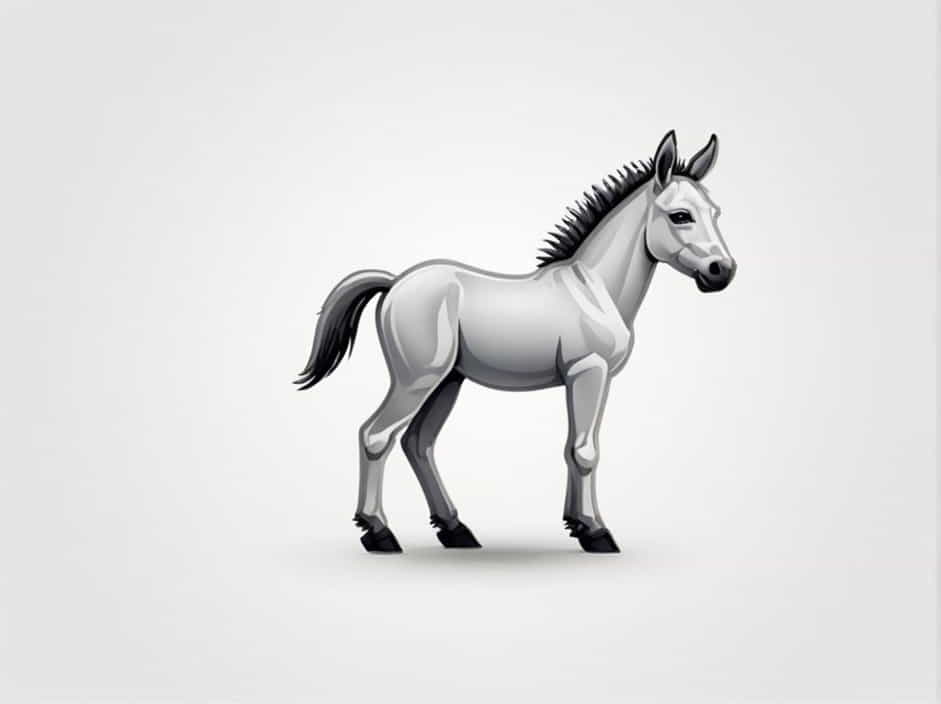Donkeys and their foals, often referred to as colts or fillies, are fascinating animals with a rich history in human civilization. Many people associate colts with young horses, but the term can also apply to male donkey foals. In this topic, we will explore the growth, characteristics, and care of donkey foals, as well as the differences between donkey foals, horse foals, and mule foals.
What Is a Donkey Foal Called?
A young donkey is called a foal at birth. Depending on its gender:
- A male donkey foal is called a colt.
- A female donkey foal is called a filly.
When a donkey reaches about one year of age, it is referred to as a yearling.
Donkey vs. Horse Foals: Key Differences
While donkeys and horses belong to the Equidae family, they have distinct genetic, behavioral, and physical differences.
| Feature | Donkey Foal (Colt/Filly) | Horse Foal (Colt/Filly) |
|---|---|---|
| Ears | Longer and more upright | Shorter and rounded |
| Mane & Tail | Short, stiff mane with thin tail | Flowing mane and thick tail |
| Temperament | More independent, cautious | More social and trainable |
| Growth Rate | Slower than horses | Faster growth |
Donkey foals are sturdier, more independent, and have unique vocalizations compared to horse foals.
How Donkey Foals Develop
Newborn Stage (0-3 Months)
- Donkey foals can stand and walk within an hour of birth.
- They rely on their mother’s milk for nutrition.
- Their legs are nearly fully grown, making them appear long and lanky.
Weaning Period (4-6 Months)
- Foals begin eating solid foods like grass and hay.
- They start to develop independence but still rely on their mothers.
- Some foals may be weaned as early as 4 months, but 6 months is ideal.
Juvenile Stage (6 Months – 1 Year)
- They become more playful and curious about their environment.
- Colts may start showing dominance behaviors.
- At around one year, foals are considered yearlings.
Adolescence to Adulthood (1-3 Years)
- Growth slows down, but they continue to develop muscle and strength.
- Colts and fillies become more independent and can be trained for work.
- Donkeys reach full maturity at around 3-4 years old.
How to Care for a Donkey Foal
Caring for a young donkey requires proper nutrition, shelter, and medical attention. Here are some key points:
1. Nutrition and Feeding
- Mother’s milk is essential for the first 3-6 months.
- High-quality hay, grass, and grain should be introduced gradually.
- Fresh clean water must always be available.
2. Shelter and Environment
- Donkey foals need a dry, clean, and warm shelter.
- They should have enough space to roam and exercise.
- Fencing should be sturdy, as donkeys can be curious and try to escape.
3. Socialization and Training
- Donkeys are naturally curious but cautious.
- Foals should be handled gently from an early age.
- Basic training like haltering, leading, and responding to commands should start early.
4. Veterinary Care
- Vaccinations and deworming are crucial for foal health.
- Regular hoof trimming prevents foot problems.
- Watch for signs of illness or nutritional deficiencies.
Donkey Foals vs. Mule Foals: What’s the Difference?
A mule foal is the offspring of a male donkey (jack) and a female horse (mare). While they look similar, mules and donkey foals have key differences:
| Feature | Donkey Foal | Mule Foal |
|---|---|---|
| Parents | Both parents are donkeys | Donkey father, horse mother |
| Size | Smaller and compact | Larger than donkey foals |
| Temperament | Independent, cautious | Strong, intelligent, and trainable |
| Reproduction | Can reproduce | Sterile (cannot breed) |
Mules inherit strength and stamina from their horse mothers but also have the intelligence and endurance of donkeys.
Interesting Facts About Donkey Foals
1. They Recognize Their Mother’s Voice Immediately
Newborn foals can identify their mother’s bray within a few hours after birth.
2. Donkey Foals Are Born with Fully Developed Legs
Unlike some animals that take days to walk, donkey foals can run within hours of birth.
3. Donkeys Form Strong Bonds with Humans
If raised properly, young donkeys can become loyal companions and even develop emotional attachments to their owners.
4. Foals Use Their Ears to Communicate
Donkey foals use ear movements to express emotions like curiosity, fear, or excitement.
5. Some Donkey Foals Are Born with a Cross on Their Backs
Many donkeys have a distinct dark cross marking on their back and shoulders, often linked to Christian folklore about donkeys carrying Jesus.
A donkey foal, whether a colt or filly, is a unique and intelligent animal with fascinating traits. These animals play an important role in farming, transportation, and companionship around the world. By understanding their growth stages, behavior, and care requirements, donkey owners can ensure their foals grow into healthy and strong adults.
Whether you’re interested in raising donkeys, learning about their differences from horses and mules, or simply fascinated by their unique nature, these animals continue to captivate and serve humans in countless ways.
